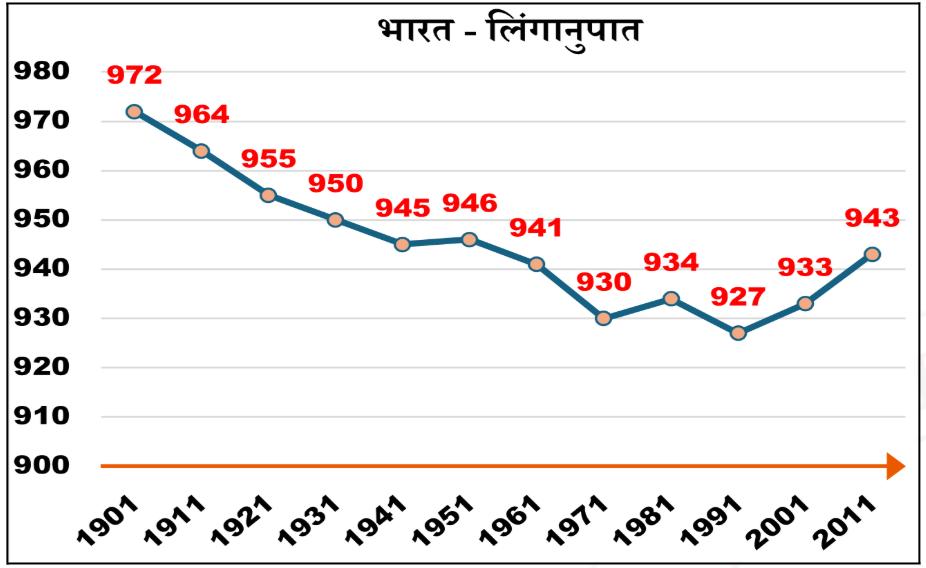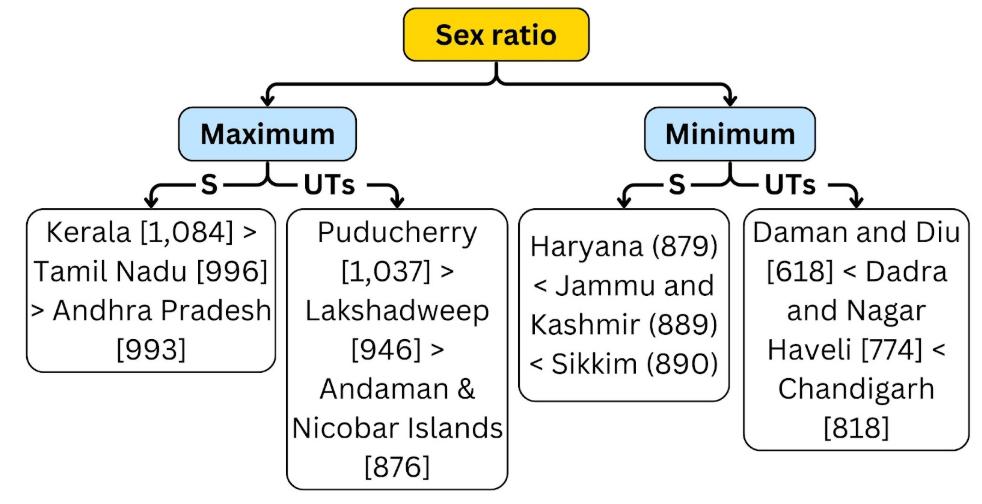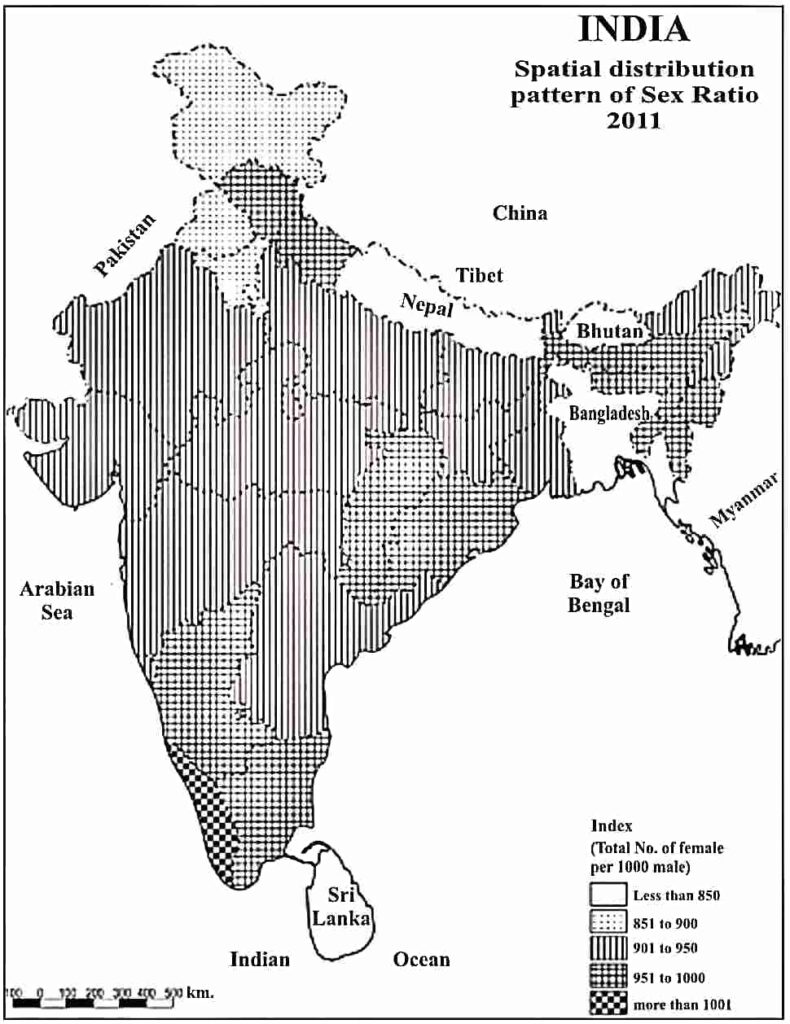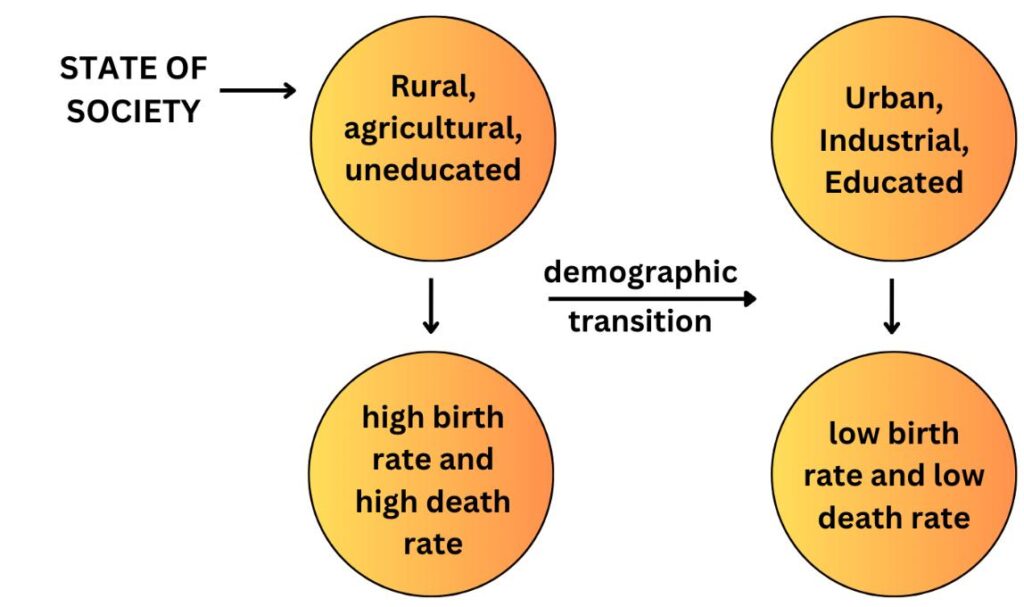In Indian Geography, India’s sex ratio, the number of females per 1,000 males, varies widely, with Kerala showing a balanced ratio and Haryana facing deficits. Socio-cultural factors shape these disparities, influencing demographic policies.
General Introduction
- An important social indicator to measure the equality prevailing between men and women in a society at a given point of time.
- Sex Ratio – Defined as the number of women per 1,000 men.
Sex Ratio in India
- According to Census 2011, the sex ratio of India is 943.
- A continuous decline in sex ratio has been recorded between 1920 and 1941. A slight increase was observed during the 1951 census but even after independence, a decline in sex ratio was observed. A slight increase in sex ratio was recorded in 1981. The lowest sex ratio was in 1991 (927).
- A continuous increase in sex ratio has been recorded after 1991 but even in the 2011 census, India could not reach the sex ratio of 1951.
- Sex ratio in India is much lower than the world average of 984.

Decrease in sex ratio between 2001 and 2011 –
- In 3 large states (Bihar, Jammu & Kashmir and Gujarat) and 3 union territories (Daman & Diu, Dadra & Nagar Haveli and Lakshadweep).
- Maximum decline in Daman & Diu (92).
Note -Highest increase in a decade – in Mizoram and lowest increase – in Uttarakhand. Sexratio increased in the National Capital Region Delhi.
- According to the census of 2011, the average sexratio in India is (940). Taking the average sex ratio of 940 as the basis of the census of 2011, states can be divided into two parts – 1. Those with a sex ratio higher than the national average and 2. Those with a sex ratio less than the national average


The child sexratio of India is 919.
- It is found highest in Arunachal Pradesh (972) and lowest in Haryana (834).
Note- In terms of sex ratio, India’s position with its neighbouring countries is as follows – China-926, Pakistan-943, Bangladesh-978, Nepal-1,014, Sri Lanka 1,034, Myanmar 1,048
Reasons behind low sex ratio in India
- Son preference: Son preference is given due to social, economic and religious reasons. Female foeticide is the main reason for this.
- Child marriage: Due to marriage and motherhood at a young age, the health of women deteriorates, which leads to untimely death.
- Economic dependence: Due to economic dependence of women and lack of health services, their mortality rate is high.
- Lack of girl education: Due to lack of education, women are not able to become self-reliant and are not able to protest against the injustice done to them.
- Urbanisation: Due to the trend of urbanisation, the sex ratio is becoming unbalanced in both rural and urban areas.
- Misuse of technology
Age Groups
Generally the population is divided into three broad age groups –
- Childhood age group – (0-14 years) – Non-productive group
- Mature age group – (15-64 years) – Productive group
- Old age group – (above 64 years) – Non-productive group
- If the population of the child age group in a country is more than 40 percent, then the population of that country is progressive because it is the former working force.
- The old age group is also called the senior age group. It is believed that when a country has less than 8 percent population in this age group, then it is called a progressive population.
Demographic Dividend
- It reflects the positive and sustainable development of human resources in the population structure.
- It includes the working class of a country which is healthy, educated and empowered.
- India is considered as a country with ‘demographic dividend’ i.e. the percentage of population in the age group of 15-64 years is high here.
- The adult age group (15-64) has two sub-groups-
- 15-39 years – ‘Youth age’, which is more active and productive than the 40-64 age group.
- 40-64 years
- In case of demographic dividend the population pyramid will be inverted.
Dependency Ratio
- The ratio of non-productive population (below 15 and above 65 age group) compared to productive or working population (15-64 age group) is called ‘dependency ratio’.
- This index is found to be high in poor and developing countries.
Demographic transition theory
- Propounded by – ‘Thompson and Notestein’, later it was modified by ‘Colin Clark’.
- According to the theory, in the initial stage of any society when it is rural, agricultural and uneducated, then both the birth rate and death rate are high.
- Due to economic and social development, when the same society becomes urban, industrial and educated, then the birth rate and death rate decrease. This change takes place in different stages which are collectively called the ‘demographic cycle’.

Population Theory of Malthus
- British economist Thomas Malthus gave the ‘Population Theory’ in 1798 in his book ‘Essay on the Principle of Population’.
- According to the theory, the means of livelihood increase in a linear progression while the population increases in a geometric progression. That is, the number of people will increase much faster than the food supply. This population explosion will result in diseases, famine, wars, etc., which will lead to a sudden decrease in the population.
